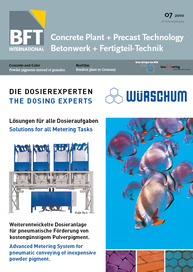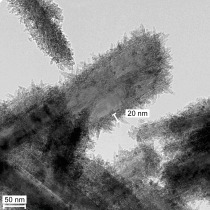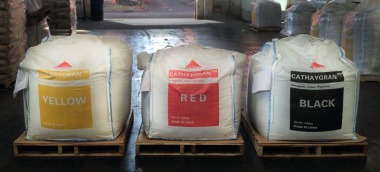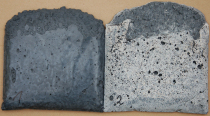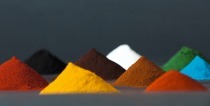New Color Pigment is Powered by the Sun
Rockwood Pigments, manufacturer of innovative inorganic pigments and business unit of Rockwood Holdings Inc. (NYSE: ROC), announces the introduction of a new generation of iron oxide color pigment fused with functional properties that respond to sunlight to enable surfaces to self-clean, reduce air pollutants and inhibit microbial
growth. The new pigment, called Solarox™ (patent-pending), is the first colored pigment of its kind with photo-catalytic properties.
Rockwood Pigments, in collaboration with the University of Turin, world-renowned for its expertise in the field of photo-catalysis, has developed a manufacturing process which merges the coloring power of iron oxide pigments with the photo-catalytic properties of titanium dioxide. The resulting Solarox pigment is available in the complete range of yellow, red and black iron oxide color shades that can be blended to create a spectrum of brown, gold, tan and buff color combinations.
“Solarox represents a completely new approach in color pigment development as we combine the aesthetic appeal of color with the functional power of photo-catalysis, powered by natural light,” says Rockwood Pigment’s President, Andrew Ross. “Through this development, we believe that we will accelerate the interest in and consumption of construction products with photo-catalytic properties. The initial response from customers reinforces our belief in the ultimate success of this product launch. This product will revolutionize the way color is used, moving beyond aesthetic appeal to providing a positive benefit to our environment”.
Solarox pigments demonstrate the same high-durability, fade-resistance and wide application of standard iron oxides. Tests at the University of Turin have confirmed the powerful photo-catalytic properties of Solarox and its suitability for use in construction materials such as concrete masonry, pavers, plaster, stucco, roofing materials, wall renderings and decorative concrete.
Mr. Ross adds “It is easy to adopt Solarox technology in traditional concrete products. The concrete product manufacturing process will not be altered. There is no new pigment handling equipment required and no need for product reformulation, other than switching to Solarox. A customer currently making colored concrete products can easily incorporate the benefits of photo-catalytic properties simply by substituting conventional iron oxide pigments with Solarox.”
Interest in photo-catalytic properties in construction materials is increasing in response to the desire for environmentally compatible construction materials for new-build projects, refurbishments, renovations and the growing trend towards ‘green’ buildings. Solarox pigments comply with existing industry standards for iron oxides. They are compliant with ASTM and European used standards like EN, ISO, BS or DIN and classified as non-hazardous.


